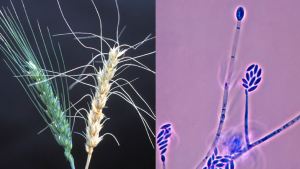2016 Fall News Update
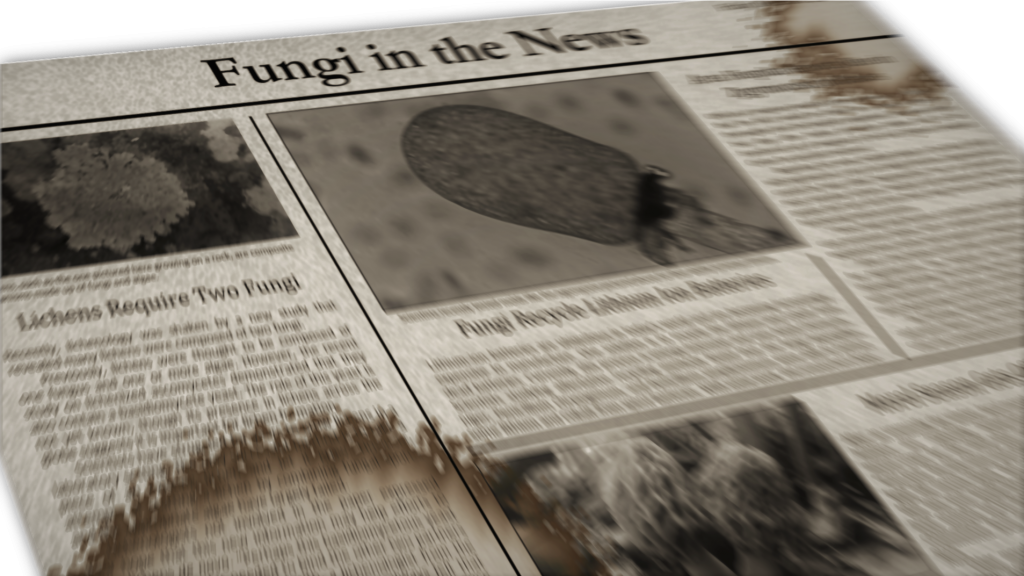
Fungi appear in the news with surprising frequency. However, many of those stories do not provide any new information. Below is a summary of what we’ve learned about fungi from November 2016 Through February 2017. Read below to learn about: two-fungi lichens, the fate of bananas, battery recycyling, Crohn’s disease, orcas, human pathogenic fungi, and more! Visit the associated links to get the full story.
With the growing concern over untrustworthy news sources and the media’s tendency to inaccurately report scientific studies, can these sources be trusted? Yes they can, with a bit of caution. I have checked to make sure all the articles based on scientific papers draw from peer-reviewed journals and that they accurately reflect the content of the papers. For articles not linked to scientific papers, I try to stick to sources with a good track record in reporting on science or to local sources for region-specific information. However, I encourage you to do your own research and decide for yourself whether these sources are trustworthy.
Lichens Require Two Fungi
In August, lichenology was shaken by a new study that revealed many lichens were composed of two fungi. Previously, lichens were thought to be composed of one fungus and one or more algae. However, the recent study on lichenized ascomycetes demonstrated that they also contain a basidiomycete yeast. The role of this yeast is not yet known, though its presence in lichens across the globe suggests it is important for lichen formation. Read more at: http://www.nytimes.com/2016/07/22/science/lichen-symbiotic-relationship.html.
Bananas Extinct in 5-10 Years?
New research suggests that bananas could be extinct in five to ten years if nothing is done. Scientists sequencing the genomes of three fungal diseases of bananas (yellow Sigatoka, black Sigatoka, and eumusae leaf spot) found that two of the fungi had evolved genes necessary to control the banana’s metabolism. The diseases were already able to attack their host’s immune system. This new ability makes them much more dangerous and could result in the extinction of the commercial banana in less than a decade. Read more at: http://www.sciencealert.com/fungal-disease-could-wipe-bananas-out-in-5-to-10-years-say-scientists.
Fungi Recycle Batteries
Lithium-ion batteries are ubiquitous in today’s world and are becoming increasingly expensive to manufacture. One solution is to recycle the lithium and cobalt from dead batteries. Currently, this process is energy-intensive and uses harsh chemicals. Scientists studying alternative recycling methods found that the fungi Aspergillus niger, Penicillium chrysogenum, and Penicillium simplicissimum were able to extract some lithium and cobalt from spent batteries. With some work, the researchers hope fungi can be used as an environmentally friendly option for battery recycling. Read more at: http://www.forbes.com/sites/carmendrahl/2016/08/21/mold-might-be-the-future-of-recycling-for-rechargeable-batteries/.
Role of Fungus in Crohn’s Disease
Researchers who examined the organisms present in the feces of patients with Crohn’s disease consistently found the fungus Candida tropicalis. The fungus was present in higher concentrations than in healthy people. Patients with the disease also had above average levels of E. coli and Serratia marcescens. The authors of the study suggest that those three organisms work together to form biofilms, which protect the organisms and cause inflammation. This likely contributes to the symptoms of Crohn’s and similar diseases. Read more at: http://www.cbsnews.com/news/new-research-offers-clues-to-cause-of-crohns-disease/.
Fungal Communities Delay Chronic Wound Healing
Researchers found that patients with chronic wounds were very likely to have a diverse community of fungi and bacteria that prevented their wound from healing. This study examined people with chronic diabetic foot ulcers. It found that 80% of sufferers had fungi infecting their chronic wounds. The researchers identified 284 different species of fungi infecting chronic wounds. Microbial communities composed of a greater number of species were associated the worst outcomes (longer recovery time or amputation). Read More at: https://www.sciencedaily.com/releases/2016/09/160906103144.htm.
Chernobyl Fungi Sent to Space
Eight species of fungi collected from the area directly surrounding Chernobyl were sent into space last July. Chernobyl was the site of a nuclear accident that bathed the nearby areas in intense radiation. Scientists are hoping that the fungi still living in the area can produce compounds that could be adapted to help humans survive radiation in space. The fungi were sent to the International Space Station so that they can be exposed to the intense radiation found in outer space. Afterwards, they will be returned to earth and the chemicals they produced will be analyzed for potential medicinal benefits. Read more at: http://www.popsci.com/spacex-launch-carries-chernobyl-fungi-into-space.
Microsporidia Fuse Nematode Gut Cells
Researchers studying disease caused by microsporidia, very simple pathogenic fungi that belong to the phylum Microspora (FFF#017), discovered that the tiny fungi can spread from one cell to the next by fusing together adjacent cells. The research was carried out in the nematode C. elegans, but is likely applicable to other animals as well as humans. Some bacteria and viruses use this strategy, but this is the first time it has been observed in fungi. Microsporidia reside inside host cells, where they have easy access to the cells’ nutrients. By fusing an adjacent cell, they are able to spread from one cell to the next without exiting the cell. This helps them avoid the host’s immune system and makes these infections more difficult to treat. The researchers hope that these findings will improve efforts to develop treatments Microsporidia infections. Read more at: http://ucsdnews.ucsd.edu/pressrelease/single_celled_fungi_multiply_alien_like_by_fusing_cells_in_host.
Fungus Kills Tagged Orca
A recently published review concluded that a killer whale that washed ashore in late March died due to a fungal infection introduced by a satellite tag. Researchers routinely use satellite tags to track the location of orcas to aid conservation efforts. Unfortunately, this tag carried a fungus with it when it penetrated the killer whale’s skin. The orca already had a weakened immune system, so the opportunistic fungus was able to access the whale’s blood stream and kill the animal within a month. The National Oceanic and Atmospheric Administration suspended its tagging program in response to the report. Read more at: https://www.washingtonpost.com/news/animalia/wp/2016/10/10/a-geotagging-program-was-supposed-to-help-endangered-whales-instead-it-killed-one/.
C. auris Identified in U.S.
In early November, the Centers for Disease Control and Prevention (CDC) reported that it identified 13 cases of Candida auris in the United States. The CDC is concerned about the spread of C. auris because it is often resistant to antifungal drugs and it can spread in hospital settings. None of the U.S. samples showed the high degree of drug resistance found in strains from other countries. Six of the infections were identified from patient records and stored lab samples. C. auris is difficult to identify using standard equipment, so proper identification takes a long time. The CDC estimates that C. auris arrived in the U.S. within the past three years. Read more at: http://www.cdc.gov/media/releases/2016/p1104-candida-auris.html.
Wacky News
In Arlington, VA, one local resident reported a dead owl to authorities, who arrived to find a mushroom instead. A picture on Facebook of the mushroom shows a beautiful Hen of the Woods (Grifola frondosa, FFF#103) with many fronds that could easily be mistaken for ruffled feathers. From: https://www.washingtonpost.com/local/alexandria-and-arlington-animal-watch/2016/11/21/c28a170e-a84d-11e6-ba59-a7d93165c6d4_story.html?utm_term=.5adb686a0d5b and https://www.facebook.com/angrypeopleinlocalnewspapers/photos/a.922737227771281.1073741828.922716137773390/1349590688419264/?type=3&theater (look through comments for mushroom picture).

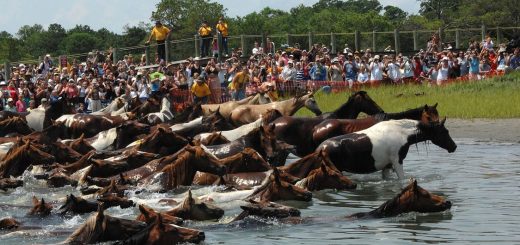
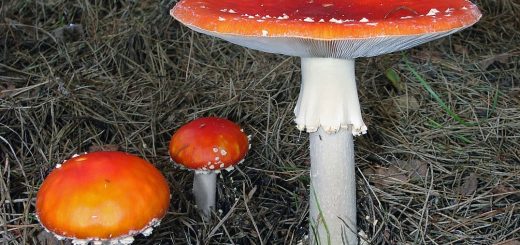
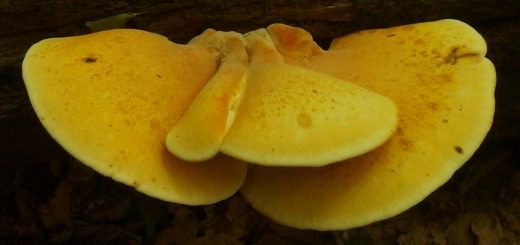





![#011: Characteristics of Kingdom Fungi [Archived]](https://www.fungusfactfriday.com/wp-content/themes/hueman/assets/front/img/thumb-small-empty.png)

